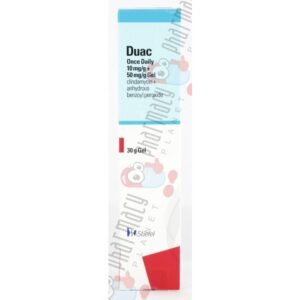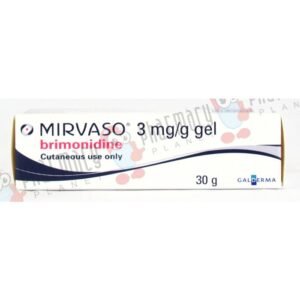What is Rozex?
How does it work?
What are the benefits of taking it?
How do I use it and its dosage?
Follow exactly the Rozex gel administration instructions indicated by your doctor. Ask your doctor or pharmacist if you have doubts.
Apply the gel to the affected areas twice a day, in the morning and at night before going to bed.
- Before applying the gel, clean the affected area with a mild cleanser and dry the affected area
- Apply a thin layer of gel
- Massage lightly
- After the application, you should wash your hands carefully.
You can use non-comedogenic (pimple-producing) and non-astringent (non-drying) cosmetics after the application of Rozex Gel.
Use in children
Do not use in children. There is no experience in the use of this medicine in children.
Side effects & precautions
Like all medicines, Rozex gel for Rosacea can cause side effects, although not everybody gets them. This medication may occasionally cause unwanted side effects at the application site such as:
Common side effects (may affect up to 1 in 10 people)
- Dry Skin
- Erythema (redness of the skin)
- Pruritus (itchy skin)
- Skin discomfort (burning, pain/stinging)
- Skin irritation
- Worsening rosacea (disease of the central part of the face consisting of redness and itching of the cheeks and chin)
Rare side effects (may affect up to 1 in 1,000 patients)
- Hypoaesthesia (decreased sensitivity)
- Paresthesia (impaired sensitivity)
- Dysgeusia (alteration of taste to metallic taste)
- Sickness
Adverse effects of Unknown frequency (frequency cannot be estimated from the available data)
- Contact dermatitis (eczema from contact with the gel)
Special warnings and precautions
Contact with the eyes and mucous membranes should be avoided. Some cases of ocular tearing have been described in connection with the use of topical metronidazole, therefore the products should not be contacted with the eyes.
In the event of local irritation, the frequency of application should be reduced or treatment should be temporarily or permanently discontinued, according to clinical criteria.
Cosmetics can be used after the application of Rozex.
Metronidazole belongs to the chemical family of nitroimidazoles, so it should be used with caution in those patients who suffer or have a history of blood dyscrasias.
Exposure to UV radiation (sunbaths, solarium, sunlamps) should be avoided during treatment with metronidazole.
Unnecessary and prolonged use of this medicine should be avoided. Evidence suggests that metronidazole is carcinogenic in certain animal species. There is no evidence of data on the carcinogenic effect in humans.
Methyl parahydroxybenzoate (E-218) can cause allergic reactions (possibly delayed). Rozex gel can cause skin irritation because it contains propylene glycol.
Interactions
Interactions with other drugs are less likely with topical administration of metronidazole, but its co-prescription with anticoagulants should be considered. Oral administration of metronidazole has been reported to interact with disulfiram, alcohol (Antabuse effect) and may potentiate the anticoagulant effect of Coumarin and Warfarin, resulting in prolonged prothrombin time. The effect of topical metronidazole on prothrombin is unknown.





